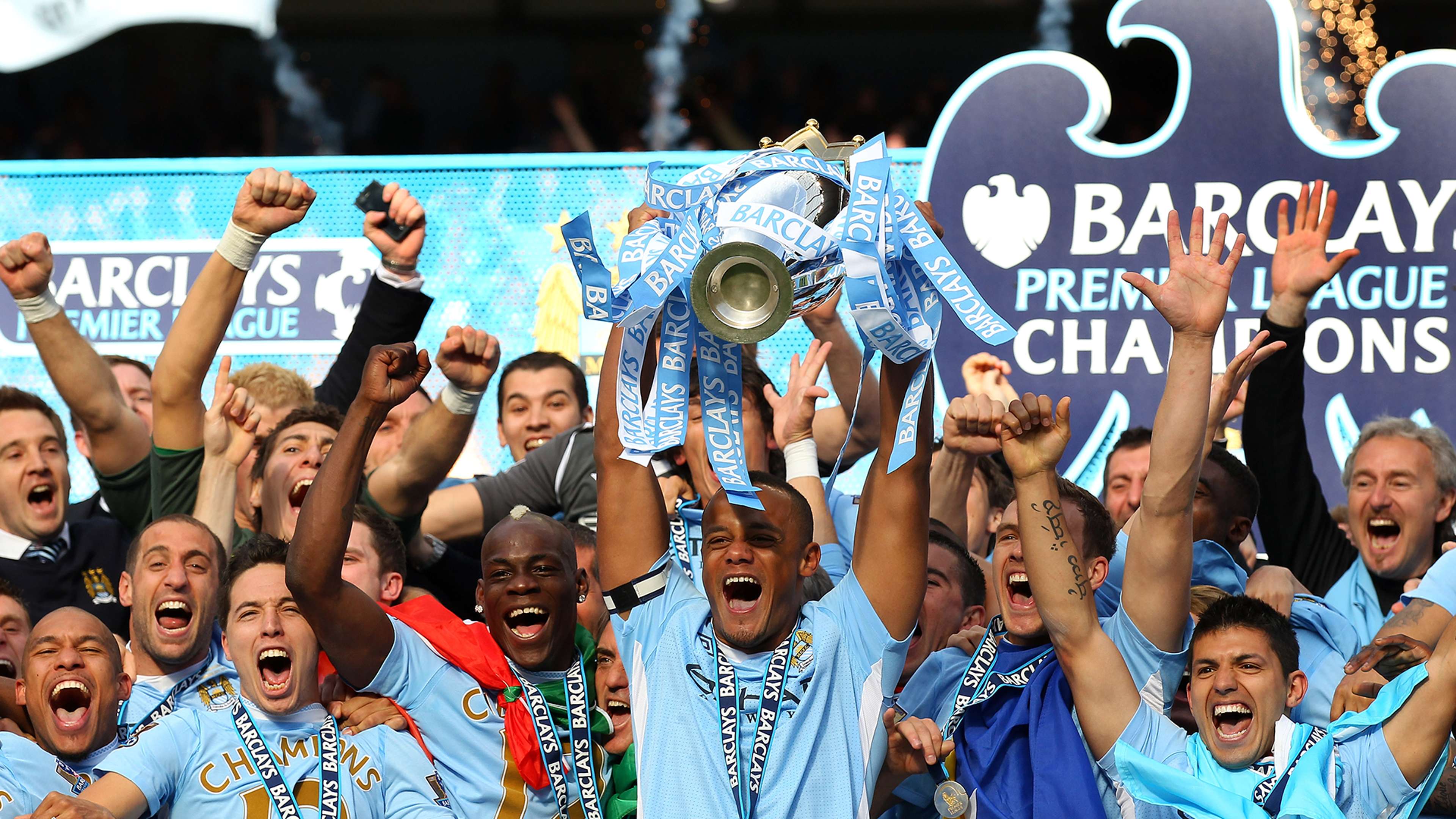Goal difference, goals scored, head-to-head – how do leagues determine ranking when clubs are level on goal difference?
The amount of yellow cards you pick up in a season could also potentially determine your finish in the league, as well as a slew of other quirky tie-breakers and rules.
So how do the likes of the Premier League, La Liga, Ligue 1, Serie A and other top competitions determine their table rankings? Goal takes a look.
Jump to
- What is goal difference vs. head-to-head?
- How does the Premier League rank teams level on points?
- How does the Champions League rank teams level on points?
- How does La Liga rank teams level on points?
- How does the Bundesliga rank teams level on points?
- How does Ligue 1 rank teams level on points?
- How does Serie A rank teams level on points?
- How does goal difference and head-to-head work in international competitions?
What is goal difference vs. head-to-head?
Goal difference is a tie-breaker used to rank teams who finish on equal points in a league tournament.
Goal difference is counted as the number of goals scored by a team in all league matches across the season, minus the number of goals conceded – for instance, if a team were to score four goals but concede two across two matches, their goal difference would be +2. A negative goal difference occurs when a team concedes more goals than they have scored, like if they conceded three but managed to score one goal (giving them a goal difference of -2).
The usage of goal difference as a tie-breaker was first introduced at the 1970 World Cup, and then used by the English Football League in 1975. Since then, the majority of European football leagues as well as tournaments around the world use goal difference to determine ranking – though other competitions may favour the "head-to-head" record or other variations as a priority tie-breaker.
Using head-to-head as a tie-breaker determines the form of the two level clubs when they have faced each other. If Chelsea and Liverpool were level on points but Chelsea managed to beat Liverpool home and away in the league, the London side would be deemed victorious.
How does the Premier League rank teams level on points?
In the English top-flight, if any clubs finish the season with the same number of points, their position is first determined by:
- Goal difference
- Higher number of goals scored
- Playoff at neutral venue if relevant for deciding champion, relegation or participating in a European league, otherwise by draw.
How does the Champions League rank teams level on points?
In the Champions League group stages, teams are organised into groups of four and then ranked according to points. The teams to finish in the top two of their group will progress to the knockout stages, while the latter two will either be eliminated or dropped into the Europa League.
- Head-to-head points between tied teams
- Head-to-head goal difference between tied teams
- Goals scored in head-to-head matches among tied teams
- Away goals scored in head-to-head matches among tied teams
- If more than two teams are tied, and after applying all head-to-head criteria above, a subset of teams are still tied, all head-to-head criteria above are reapplied exclusively to this subset of teams
- Goal difference in all group matches
- Goals scored in all group matches
- Away goals scored in all group matches
- Wins in all group matches
- Away wins in all group matches
- Disciplinary points (red card = 3 points, yellow card = 1 point, expulsion for two yellow cards in one match = 3 points)
- UEFA club coefficient
How does La Liga rank teams level on points?
La Liga decides their tie-breakers between two level clubs first through goal difference, like in the Premier League.
But, if points are equal between two or more clubs, then the tie is broken through:
- Head-to-head points between tied teams
- Head-to-head goal difference between tied teams
- Goal difference
If the tie is still not broken, then the winner will be determined by Fair Play scales:
- Receiving a yellow card: -1 point
- Doubled yellow card/ejection -2 points
- Direct red card -3 points
- Suspension of coach or other club personnel -5 points
- Misconduct of supporters -5-7 points
- Stadium closure -10 points
Then, if the clubs are still level, the ranking will be resolved with a tie-break match in a neutral stadium.
How does the Bundesliga rank teams level on points?
In the Bundesliga, they also use goal difference as the priority tie-breaker. Their rules for determining the end-of-season ranking are as follows:
- Goal difference
- Goals scored for the entire season
- Head-to-head results (total points accumulated)
- Head-to-head goals scored
- Head-to-head away goals scored
- Total away goals scored for the entire season
- Playoff at neutral venue if relevant for deciding champion, relegation or participating in a European league, otherwise by draw.
How does Ligue 1 rank teams level on points?
 ANNE-CHRISTINE POUJOULAT
ANNE-CHRISTINE POUJOULAT
In Ligue 1, the following tie-breakers are observed:
- Goal difference
- Higher number of goals scored
- Playoff at neutral venue if relevant for deciding champion, relegation or participating in a European league, otherwise by draw.
How does Serie A rank teams level on points?
The deciding tie-breakers in Serie A are as follows:
- Head-to-head points
- Head-to-head goal difference
- Goal difference
- Higher number of goals scored
- Playoff at neutral venue if relevant for deciding champion, relegation or participating in a European league, otherwise by draw.
Until the 2004-05 season, a playoff fixture at the end of the season would be used to determine the champions, European spots or relegation, if the two teams were tied on points.
The last championship playoff occurred in the 1963-64 season when Bologna and Inter both finished on 54 points and Bologna won the playoff 2-0.
How does goal difference and head-to-head work in international competitions?
 Getty
Getty
In the group stage of the World Cup, which is the first round of the final tournament before the last-16 stage, the following tie-breakers are observed to determine the ranking of teams who are level on points:
- Points obtained in all group matches
- Goal difference in all group matches
- Number of goals scored in all group matches
- Points obtained in the matches played between the teams in question
- Goal difference in the matches played between the teams in question
- Number of goals scored in the matches played between the teams in question
- Fair play points in all group matches (only one deduction could be applied to a player in a single match)
The fair play point deductions are as follows:
- Yellow card: -1 point
- Indirect red card (second yellow card): -3 points
- Direct red card: -4 points
- Yellow card and direct red card: -5 points
The fair play point deductions were observed to determine the winners of Group H in the 2018 World Cup, where Senegal and Japan were level on points, form, goal difference, number of goals scored and number of goals conceded.
Japan eventually progressed to the next round based on fair play after it was ruled that they received two fewer yellow cards than Senegal, earning a deduction of -4 points compared to Senegal's of -6 points.
>What league titles have been decided by goal difference and head-to-head?
One of the most classic, cases of a league title won based on goal difference came during the race between city rivals Manchester City and Manchester United in the 2011-12 season.
Much of the league season was a two-horse race contested by the two Manchester clubs, with the two finishing 19 points ahead of third-placed Arsenal. City and United headed into their final game of the season level on points, but City were ranked first due to their goal difference superiority of eight goals. In order to win the league, they had to make sure that they bettered United's result – who faced Sunderland away.
 Getty
Getty
City clinched the title in remarkable, unscripted fashion, scoring two goals in injury time to stage a dramatic 3-2 comeback. United scored early on to win 1-0 and had thought that they won the league after the 90th minute in the City game, where they were still 2-1 down – but an equalizer from Edin Dzeko and Sergio Aguero's later winner secured the Sky Blues the Premier League title ahead of their fiercest rivals based on goal difference.
Another league title was won in classic dramatic fashion when Arsenal beat Liverpool in the 1988-89 season. The Gunners defeated Liverpool 2-0 away at Anfield to win the championship on the last day of the season after the two finished level on points and goal difference.
PSV, Ajax and AZ headed into the final day of the 2006-07 Eredivisie season all level on points.
PSV eventually won the title during a breathless 90 minutes for all sides after winning 5-1 against Vitesse Arnhem which secured them a goal difference of +50 to Ajax's +49, while AZ lost to Excelsior.
